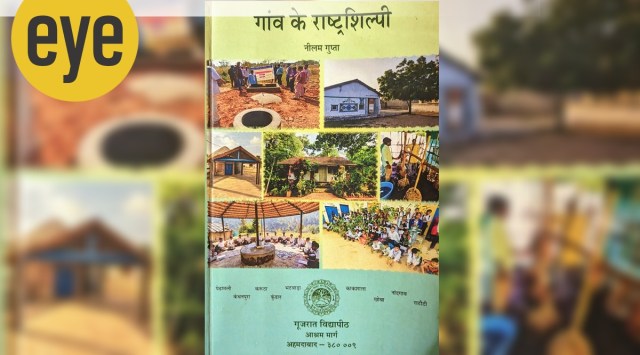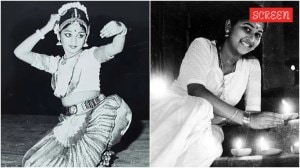Journalist Neelam Gupta’s Gaanv Ke Rashtrshilpi documents sustainable development course at Gujarat Vidyapith
The Gramshilpi programme of the Gujarat Vidyapith, Ahmedabad, takes off from Mahatma Gandhi's idea of Swarajya and rural development and enables students to build self-sustaining rural communities
 Gaanv Ke Rashtrshilpi, Neelam Gupta, Gujarat Vidyapith, 416 pages, Rs 400
Gaanv Ke Rashtrshilpi, Neelam Gupta, Gujarat Vidyapith, 416 pages, Rs 400 In 2007, a young Jaldeep Thakar enrolled himself in the two-year Gramshilpi Training programme of the Gujarat Vidyapith (GVP), Ahmedabad, upon the suggestion of a friend. For Thakar, it was meant to be just a two-year-long experiment as he had several lucrative job offers waiting for him. But after just two months of working in Pedhamali village in Gujarat’s Mehsana district, Thakar realised that not even two lives were enough to complete the work.
The Gramshilpi Program, as the name suggests, is a programme based on Mahatma Gandhi’s idea of Swarajya and rural development, that the university started in 2007 with the objective of sustainable socio-economic development of the villages. Two of the most important criteria for the programme was that the gramshilpis (the would-be architects) had to live and work in the village of their choice for their entire life and seek livelihood on their own after the initial two years. There are no repercussions for leaving, but a lot rides on their shoulders to make their vision come to fruition.
In her book Gaanv Ke Rashtrshilpi, writer Neelam Gupta follows the genesis of the programme and the stories of nine such gramshilpis, who were part of different batches of the programme and have continued to serve in the villages for the last 16 years. The book serves as an unprecedented documentation of their work and the hitherto unknown socio-economic situation of the different districts that these gramshilpis worked in.
Gupta, who worked as a journalist for 28 years in Jansatta’s Delhi office and is now a freelance journalist, was an adjunct professor in the Department of Journalism, Gujarat Vidyapith from 2016 to 2021. Her deep research shows in the way she charts how the then vice-chancellor of the university, Arun Dave, with the help of Sudarshan Iyengar, a member of the board of trustees, and registrar Rajendra Khimani, a professor in the department of Horticulture, Anand Agricultural University, got the programme up and running.
The main objective behind the programme was to reorient students to the villages. The university wanted its students to initiate sustainable development by going to the villages. After all, the first unit of the country’s development is the village itself. “In August 2018, I was accompanied by Praveen Dulera, who was my translator and logistic coordinator, to the villages where gramshilpis worked to understand their impact. Research has always been my forte due to my career as a journalist. In most cases, there was no preliminary data like development indicators to establish the socio-economic condition of the districts I visited. Therefore, I undertook my own research and observed the ground realities of the places I visited to paint a picture of the district where these gramshilpis worked,” says Gupta.
In 1920, during the inauguration address of Gujarat Vidyapith, Mahatma Gandhi had said that the purpose of establishing the university was not from the point of view of education, but from the point of view of the nation. “We are building this institution to make the students strong and character-oriented. The extent of the success we achieve with the students will ensure Swarajya of India. Swarajya cannot be established in any other way,” he is known to have said in that address. This vision embodies the spirit of the Gramshilpi programme, says Gupta in her book. “Gandhiji considered the establishment of Gujarat Vidyapith as one of his best works,” she says.
Gramshilpis are trained for two years by the Centre of Environment Education (CEE) where they are instructed in capacity and skill development. Project management, proposal writing, NGO management, communication, computer basics, sustainable agriculture, livelihood possibilities, natural resource management and environment conservation and protection are among the topics covered in the course. After the training, they can choose a village to work in. The university provides them with a grant for two years. Afterwards, they are supposed to seek out their livelihood with the help of their local society.
Gupta’s book charts the lives of the nine gramshilpis of the 2007 batch of the programme. She provides a case-by-case breakdown of each gramshilpi, listing out the effects of the initiatives taken by them and also pointing out the areas for improvement. These gramshilpis are Thakar and Dasaratha Dharma Vaghela in north Gujarat, Ashok Chowdhary, Ghanshyam Rana, Jetsi Rathore, Gautam Chowdhary, Neelam Patel, Mohan Mahla in south Gujarat and Radhakrishna Sharma working in Uttar Pradesh.
Through his efforts, Thakar was able to encourage more children to pursue higher education and dissuade them from child marriage. He was instrumental in forming a women’s self-help group where the women of the village could extend finances to each other. He helped start a dairy in the village, which raised their socio-economic level.
Similarly, other gramshilpis have been able to open a children’s bank, start a village library, distribute sanitary units and work on organic farming, sustainable livelihood and residential schools, among other initiatives.



- 01
- 02
- 03
- 04
- 05



























